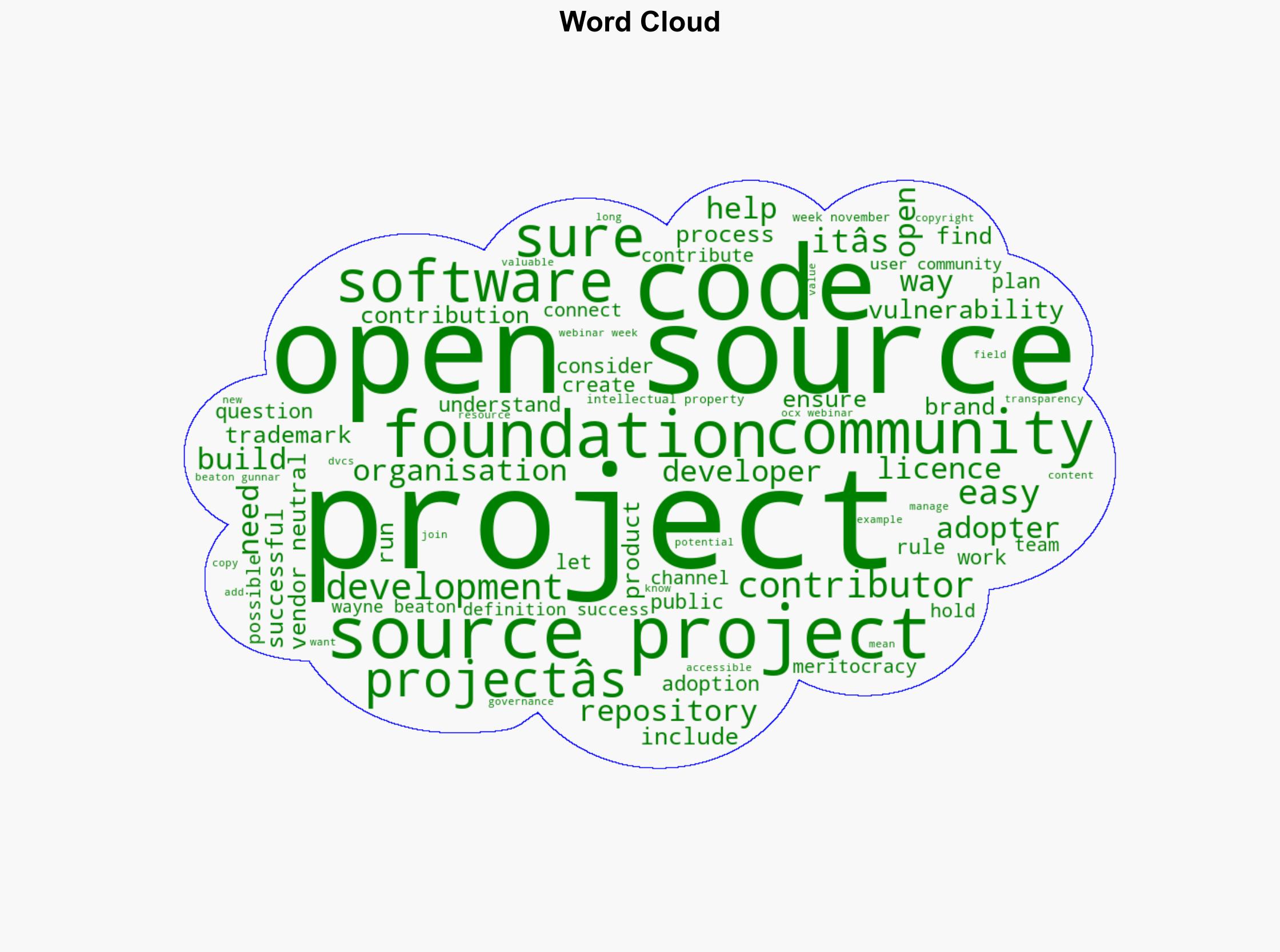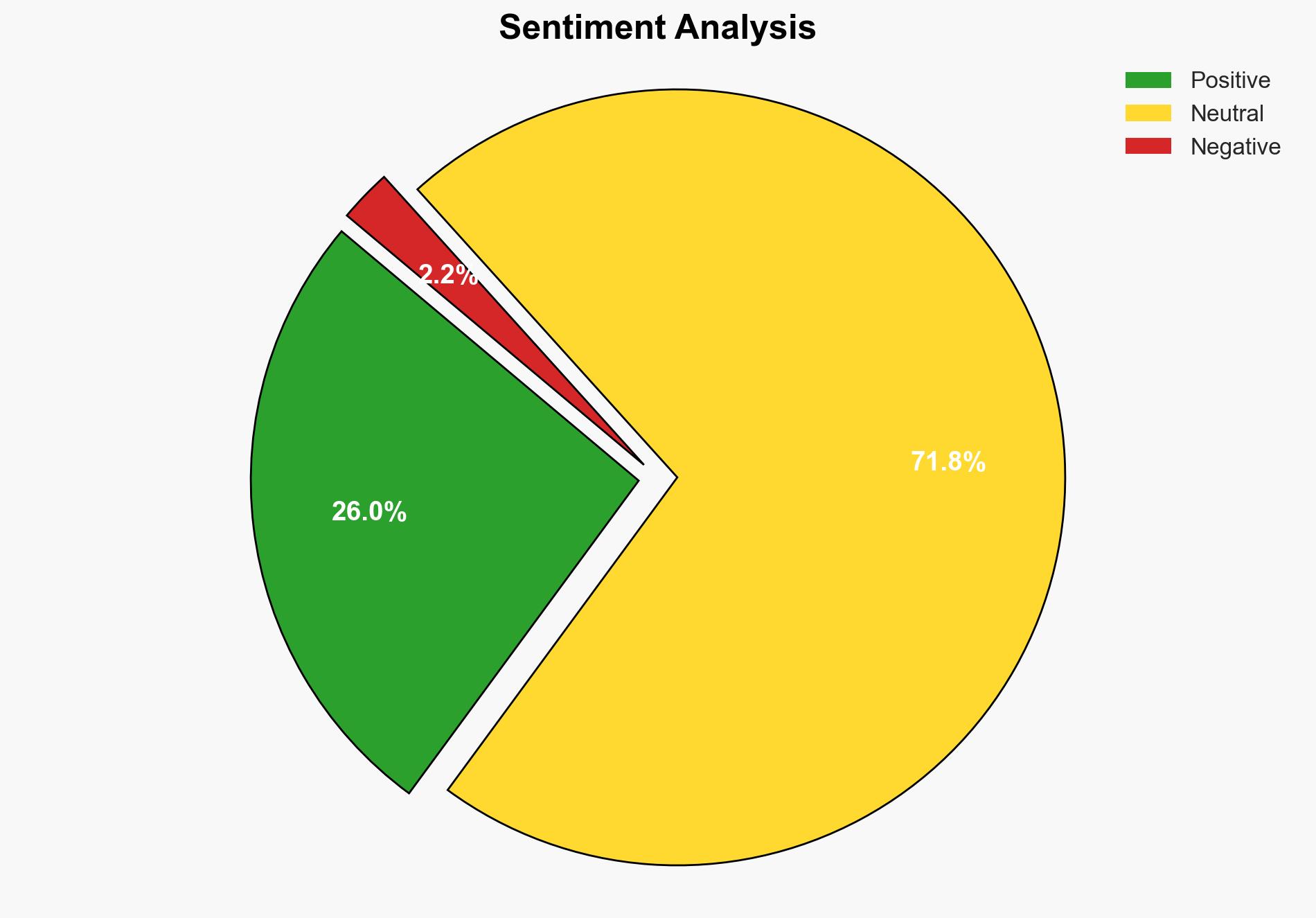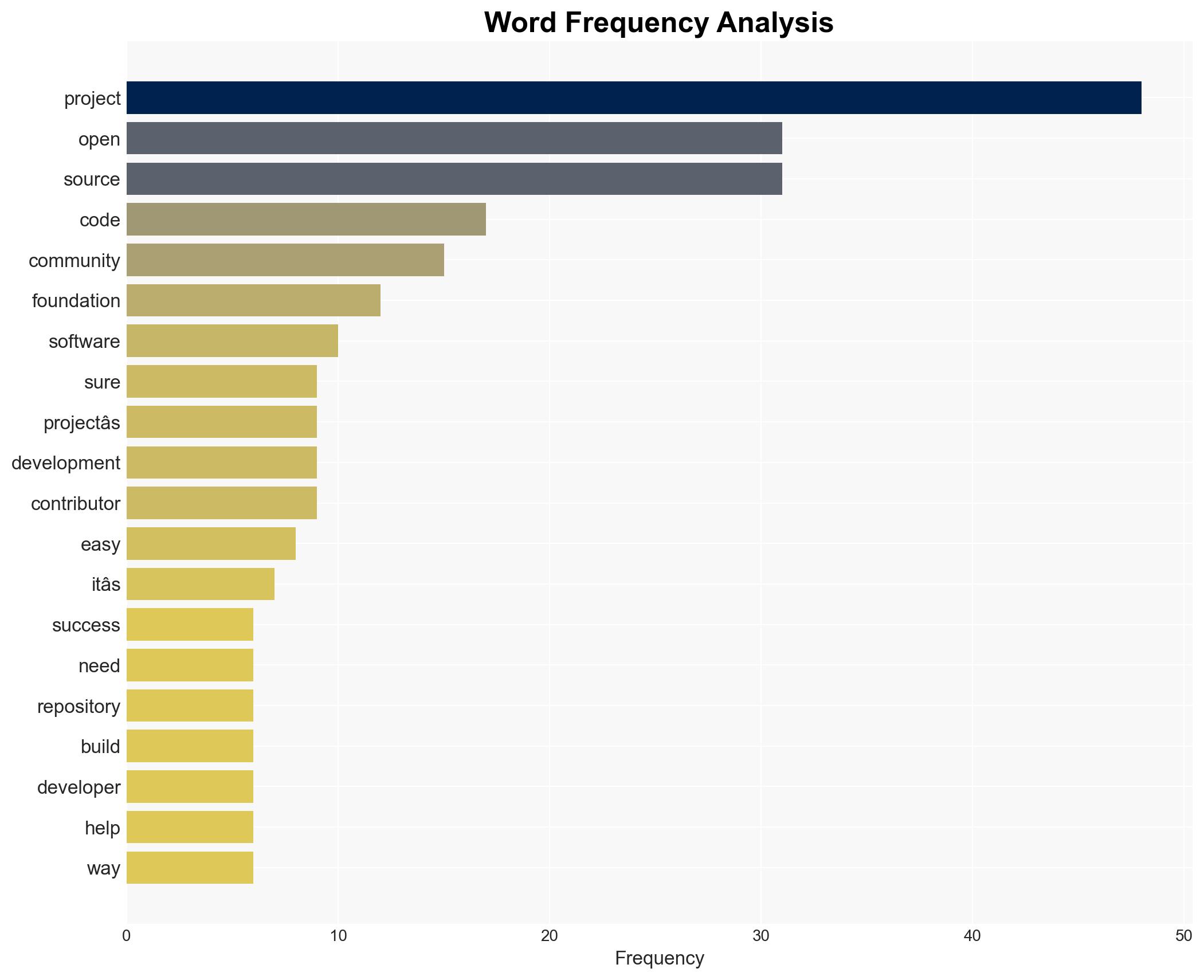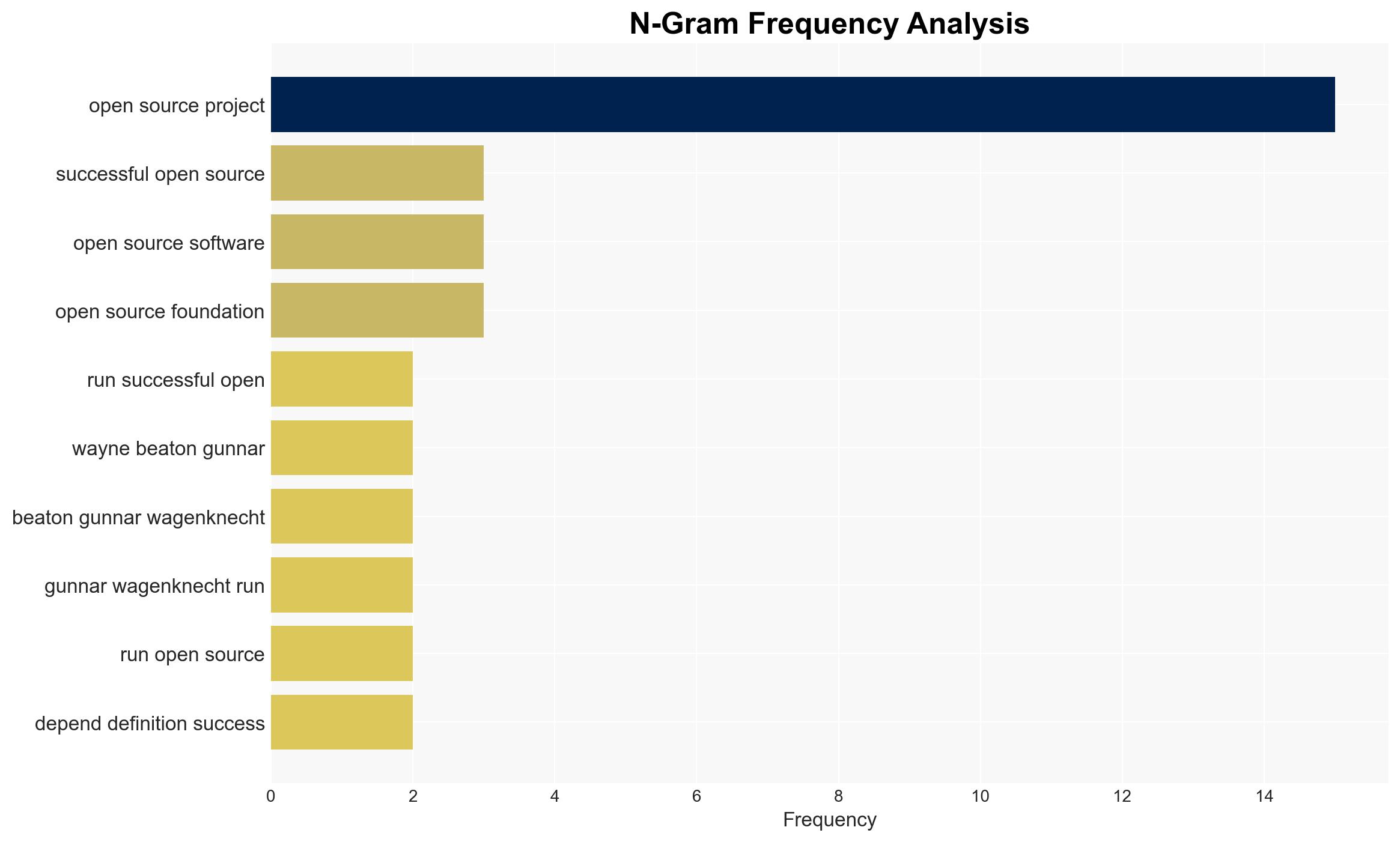Running a successful open source project – Eclipse.org
Published on: 2025-11-17
AI-powered OSINT brief from verified open sources. Automated NLP signal extraction with human verification. See our Methodology and Why WorldWideWatchers.
Intelligence Report: Running a Successful Open Source Project – Eclipse.org
1. BLUF (Bottom Line Up Front)
With a high confidence level, the most supported hypothesis is that the success of an open source project is primarily determined by its community engagement, transparency, and adherence to a meritocratic structure. To enhance the likelihood of success, it is recommended that project leaders focus on fostering an inclusive community, ensuring transparency in operations, and maintaining a vendor-neutral environment.
2. Competing Hypotheses
Hypothesis 1: The success of an open source project is primarily determined by the quality and accessibility of its codebase.
Hypothesis 2: The success of an open source project is primarily determined by community engagement, transparency, and governance structures.
Evidence suggests that while a high-quality codebase is essential, the long-term success and sustainability of an open source project are more closely linked to community engagement and transparent governance. This is supported by the emphasis on transparency, openness, and meritocracy as critical factors for success in the source text.
3. Key Assumptions and Red Flags
Assumptions: It is assumed that the definition of success for an open source project is universally understood as community growth and project sustainability. Additionally, it is assumed that all contributors have equal access to resources and opportunities to participate.
Red Flags: Potential bias may exist in overemphasizing community engagement at the expense of technical quality. There is also a risk of deceptive practices if transparency is not genuinely implemented, leading to a false sense of openness.
4. Implications and Strategic Risks
The primary risk is that without genuine transparency and community engagement, projects may face stagnation or decline due to lack of contributor motivation and trust. Politically, a lack of vendor neutrality could lead to dominance by specific organizations, reducing diversity of thought and innovation. Economically, projects may struggle to attract sponsorship or investment if perceived as closed or biased.
5. Recommendations and Outlook
- Actionable steps include establishing clear guidelines for transparency and meritocracy, actively promoting community engagement, and ensuring vendor neutrality.
- Best Scenario: The project thrives with a robust community, leading to widespread adoption and innovation.
- Worst Scenario: Lack of genuine transparency leads to community distrust and project decline.
- Most-likely Scenario: With focused efforts on community and transparency, the project achieves moderate success and sustainability.
6. Key Individuals and Entities
Wayne Beaton and Gunnar Wagenknecht are key figures in the discourse on running successful open source projects, emphasizing community and transparency.
7. Thematic Tags
Cybersecurity, Open Source, Community Engagement, Transparency, Governance
Structured Analytic Techniques Applied
- Adversarial Threat Simulation: Model and simulate actions of cyber adversaries to anticipate vulnerabilities and improve resilience.
- Indicators Development: Detect and monitor behavioral or technical anomalies across systems for early threat detection.
- Bayesian Scenario Modeling: Quantify uncertainty and predict cyberattack pathways using probabilistic inference.
- Cross-Impact Simulation: Simulate cascading interdependencies and system risks.
Explore more:
Cybersecurity Briefs ·
Daily Summary ·
Support us
·





